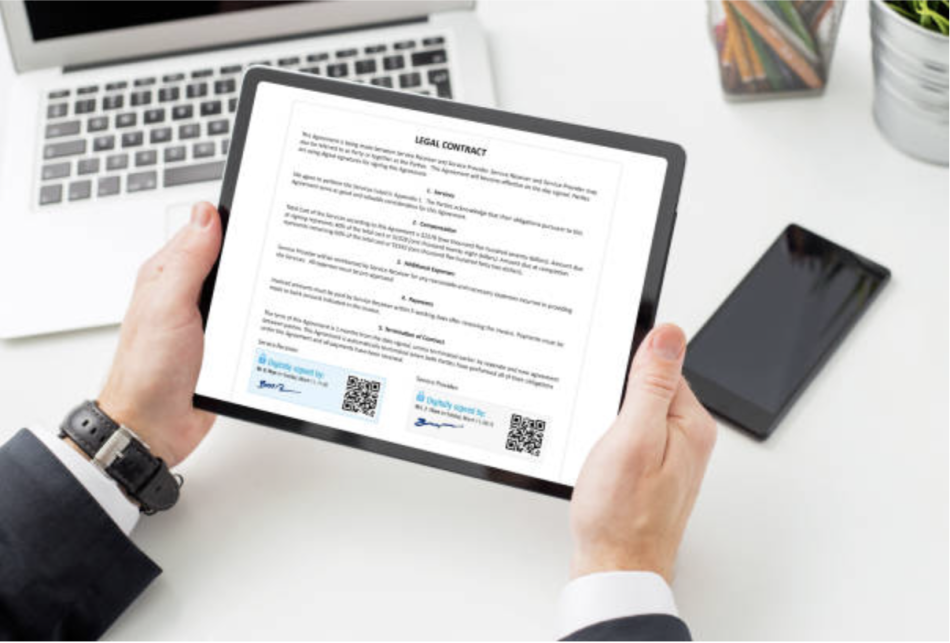Document verification process in banking: Enhancing security, compliance, and trust

Image: supplied
In this era of rapid digital advancements, the banking industry finds itself grappling with a multitude of challenges, and at the forefront stands the formidable task of verifying document authenticity. Moreover, document verification, a pivotal step encompassing the realms of document attestation, authentication, and meticulous checking, emerges as a crucial linchpin in mitigating risks and fostering seamless banking operations.
In a world brimming with innovation, where technology permeates every aspect of our lives, the sanctity of documents becomes ever more paramount. As banks endeavor to adapt to this digital landscape, the age-old practice of verifying documents takes on a new dimension, blending traditional methods with cutting-edge technologies.
Importance of Online Document Verification in Banking
You may wonder, why is document verification so important in the banking industry? Simply put, it’s all about trust and security. Banks handle sensitive customer information daily. Therefore, it’s imperative for them to verify that the documents provided by their customers are legitimate.
6 Ways Document Authentication Assists the Banking Industry
Enhancing Security
Document verification enhances security by preventing the use of fraudulent documents, thereby protecting both the bank and its customers from potential threats.
Ensuring Compliance
Banks have to comply with numerous regulations. Document verification helps in ensuring compliance by proving that customers are who they claim to be, thus avoiding legal complications.
Streamlining Customer Onboarding
The document verification process can help to streamline customer onboarding. By quickly verifying the authenticity of customer documents, banks can expedite the onboarding process and enhance customer satisfaction.
Reducing Fraud
Document verification is an effective way to reduce fraud. By validating the authenticity of documents, banks can prevent fraudulent activities, such as identity theft and money laundering.
Improving Customer Trust
When customers know their bank is committed to security and legitimacy, their trust in the bank increases. Document verification plays a vital role in building this trust.
The Future of Document Verification in Banking
The document verification process is continually evolving, with advancements in technology playing a pivotal role. Artificial Intelligence (AI) and blockchain technology are at the forefront of this evolution.
The Role of AI and Blockchain
AI can automate the document verification process, making it faster and more accurate. It can identify patterns and anomalies that may be missed by human eyes. On the other hand, blockchain technology provides a secure platform for storing and verifying documents. Its decentralized nature ensures that once a document is stored on the blockchain, it cannot be altered, providing an irrefutable proof of authenticity.
The Impact of Document Checking on the Banking Industry
The impact of document verification services on the banking industry is far-reaching. Not only does it ensure a secure and trustworthy environment for conducting financial transactions, but it also aids in maintaining the integrity of the banking system as a whole.
Enhancing Risk Management
Firstly, effective document verification processes aid in risk management by identifying potential threats early. This could be anything from a suspicious transaction to a questionable document – early detection is key to mitigating potential damage.
Facilitating Digital Transformation
Secondly, as banks continue to shift their operations online, the need for efficient and effective document verification processes has grown. Digital document verification is vital in this transformation, allowing banks to provide a seamless online banking experience for their customers.
Supporting Global Operations
With banking operations expanding globally, banks often have to handle documents from various countries, each with its own set of regulations. Document verification processes aid in ensuring all international documents meet the required standards, thus supporting the bank’s global operations.
Challenges and Solutions On Verification of Documents
While document verification provides numerous benefits, it’s not without its challenges. However, solutions exist to overcome these hurdles.
Challenges
Some common challenges include the time-consuming nature of manual verification, the risk of human error, and the difficulty in verifying foreign documents.
Solutions
Technology comes to the rescue here. AI can speed up the verification process and reduce human error. Blockchain technology can offer secure and unalterable storage for verified documents. Cloud-based solutions can provide a platform for easy access and verification of documents, no matter where they originate.
Conclusion: The Integral Role of Document Verification in Banking
In conclusion, document verification plays a vital role in the banking industry by enhancing security, ensuring compliance, streamlining processes, reducing fraud, and improving customer trust. With the advent of AI and blockchain technology, the future of document verification looks promising. Despite challenges, technological solutions offer efficient and secure alternatives. Lastly, as the banking landscape continues to evolve, document verification remains a crucial element in fostering a trustworthy and efficient banking ecosystem for customers worldwide.





